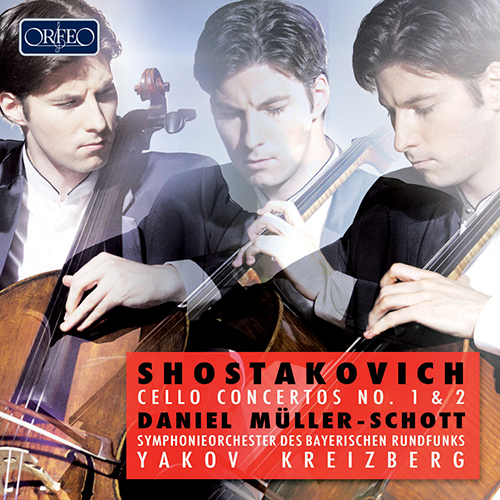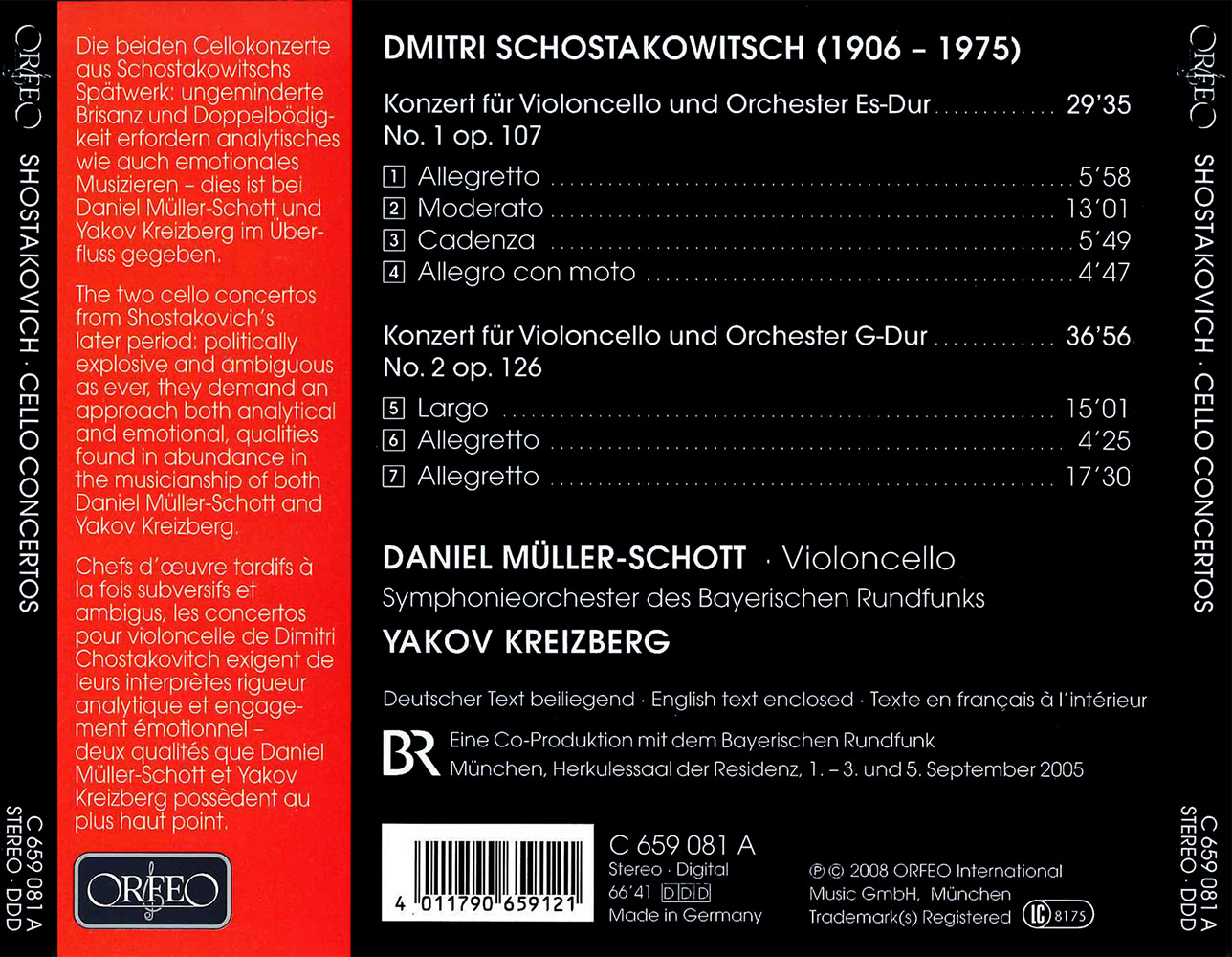Shostakovich: Cello Concertos Nos. 1 & 2
With his recording of Dmitri Shostakovich’s two cello concertos, 
Daniel Müller-Schott
Foto: Christine SchneiderDaniel Müller-Schott has set out to explore the later works of a composer whose cryptic style represents a particular challenge for the performer, such were the political and personal circumstances of the composer’s life of suffering. As with Shostakovich’s symphonies, the cello concertos contain an undertow of constant menace culminating in blatant outbursts of the most aggressive sonorities and rhythms. Even though both the First Cello Concerto op. 107 of 1959 and the Second Cello Concerto op. 126 of 1966 were written after Stalin’s death in 1953, the threat of Soviet dictatorship and censorship continues to be palpable, as is the composer’s attempt to counter these dangers by means of encoded messages that lie between the notes. In order to convey these messages both emotionally and intellectually, Daniel Müller-Schott brings all his musical abilities and knowledge to bear on both works. More than once he allows the listener to feel the sense of heart-rending climax which according to the dedicatee and first performer of both works, Mstislav Rostropovich, the later piece in particular achieves. With the Bavarian Radio Symphony Orchestra under Yakov Kreizberg, Daniel Müller-Schott offers an exemplary interpretation of both concertos that also does justice to the peculiarities and details of their instrumentation, notably the otherworldly, Mahlerian sounds of the celesta that accompany the floating harmonics in the solo cello part in the op. 107’s opening Moderato and, more generally, in the second movement of the Second Concerto, in which Shostakovich uses a popular song from the time of the Russian Revolution to produce a grotesque dance with dissonant fanfares. No less typical of Shostakovich are the reminiscences of composers such as Mussorgsky and the set of variations in the final movement of the op. 126 Concerto, written at a time when the composer was already marked out by death, a piece described by Daniel Müller-Schott as Òperhaps the most emotionally multilayered of all cello concertosÓ, the abrupt ending of which is as disturbing as it is profoundly moving.

















